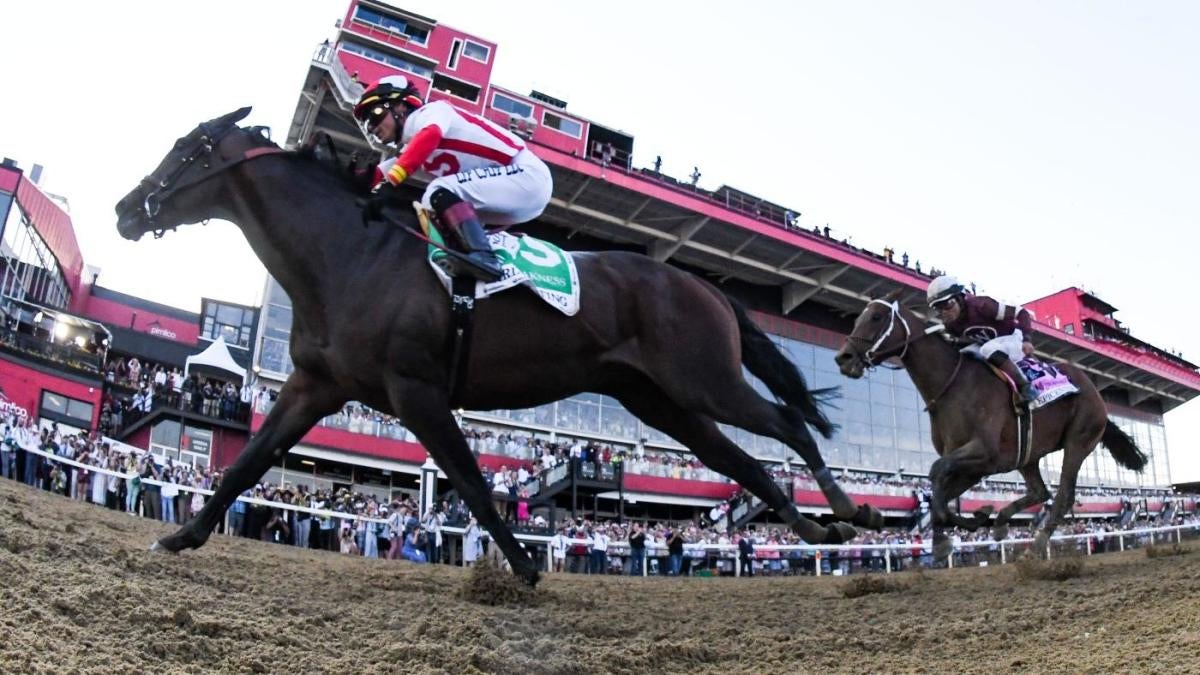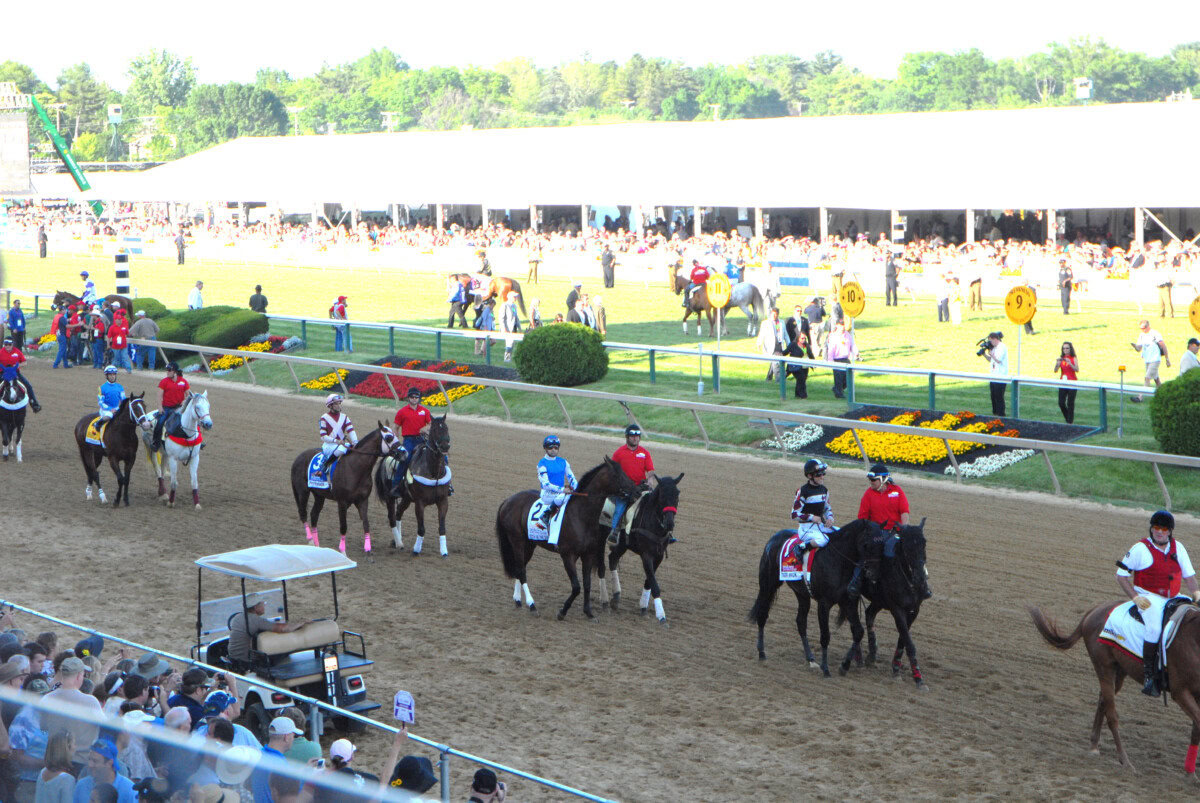Top Contenders

Preakness picks 2024 – The Preakness Stakes is a prestigious race, and selecting potential winners requires careful consideration of several key factors, including:
- Performance History: A horse’s past performances, particularly in similar races, provide valuable insights into its capabilities and potential.
- Recent Form: The horse’s recent races are crucial indicators of its current fitness and form, offering clues about its readiness for the Preakness.
- Trainer and Jockey: The experience and expertise of the trainer and jockey can significantly influence a horse’s performance and chances of winning.
Based on these factors, here are some horses that are likely to be among the favorites for the 2024 Preakness Stakes:
Epicenter
- Won the 2022 Breeders’ Cup Juvenile and placed second in the Kentucky Derby.
- Consistent performer with a strong finishing kick.
- Trained by Steve Asmussen, a renowned trainer with a proven track record.
Cyberknife
- Won the 2022 Arkansas Derby and placed third in the Kentucky Derby.
- Known for its speed and stamina, making it a threat in races with a longer distance.
- Trained by Brad Cox, who has a strong record in major races.
Forte
- Won the 2022 Breeders’ Cup Juvenile Turf and placed fourth in the Kentucky Derby.
- Versatile horse that can perform well on both dirt and turf.
- Trained by Todd Pletcher, a legendary trainer with multiple Preakness wins.
Course Analysis

The Preakness Stakes is run on a dirt track that is 1 3/16 miles (2,012 meters) long. The course is known for its long stretch run, which is 708 feet (216 meters) long. This stretch run gives horses that are able to close ground late in the race a chance to make up ground.
The Preakness Stakes is also known for its challenging turns. The first turn is a sweeping 180-degree turn that comes up quickly after the start of the race. The second turn is a tighter 90-degree turn that comes at the top of the stretch run. These turns can be difficult for horses to navigate, and they can give an advantage to horses that are able to handle them well.
The Preakness Stakes is a race that requires horses to be versatile. They need to be able to handle the distance of the race, the turns, and the stretch run. Horses that are able to do all of these things have a good chance of winning the Preakness Stakes.
Horses That Have Historically Performed Well at the Preakness Stakes, Preakness picks 2024
The Preakness Stakes has been won by a variety of horses over the years. Some of the most successful horses in the race’s history include:
- Secretariat (1973): Secretariat won the Preakness Stakes by 25 lengths, which is the largest margin of victory in the race’s history.
- Seattle Slew (1977): Seattle Slew won the Preakness Stakes by 1 3/4 lengths. He is the only horse to have won the Triple Crown since Secretariat.
- Affirmed (1978): Affirmed won the Preakness Stakes by a nose. He is the only horse to have won the Triple Crown after losing the Kentucky Derby.
- Curlin (2007): Curlin won the Preakness Stakes by 4 3/4 lengths. He is one of the most successful horses in recent Preakness Stakes history.
- American Pharoah (2015): American Pharoah won the Preakness Stakes by 7 lengths. He is the most recent horse to have won the Triple Crown.
Trainer and Jockey Performance: Preakness Picks 2024
The Preakness Stakes is a race where both trainers and jockeys play a crucial role in determining the outcome. Over the years, certain trainers and jockeys have established impressive records in the race, making their presence a significant factor to consider when making picks.
One important aspect to analyze is the track record of the trainers involved. Trainers with a history of success in the Preakness Stakes have a better understanding of the race’s unique challenges and can prepare their horses accordingly. They know how to handle the pressure of the big day and make strategic decisions during the race.
The 2024 Preakness Stakes is scheduled to take place on May 19, 2024, at Pimlico Race Course in Baltimore, Maryland. The race will be run at a distance of 1 3/16 miles on a dirt track. The Preakness Stakes is the second leg of the Triple Crown of Thoroughbred Racing, and it is one of the most prestigious races in the world.
The 2024 Preakness Stakes is expected to attract a field of top horses, and it is sure to be an exciting race. Click here for more information about the 2024 Preakness Stakes.
Trainer-Jockey Combinations
The combination of trainer and jockey is also an important factor to consider. A strong partnership between the two can lead to exceptional results. When a trainer and jockey have worked together successfully in the past, they develop a deep understanding of each other’s strengths and weaknesses. This allows them to communicate effectively during the race and make quick, informed decisions.
As the Preakness Stakes 2024 draws near, anticipation for the exciting race is building. With top contenders emerging, it’s time to consider the Preakness picks 2024. To stay informed about the event’s timing and details, check out the Preakness 2024 post time . This valuable resource provides up-to-date information, ensuring you don’t miss a moment of the thrilling Preakness Stakes 2024.
For example, in recent years, trainer Bob Baffert and jockey John Velazquez have formed a formidable partnership, winning the Preakness Stakes together multiple times. Their success can be attributed to their mutual respect, open communication, and ability to work together seamlessly under pressure.
As the excitement for Preakness Picks 2024 builds, it’s crucial to stay informed about the race’s schedule. The Preakness 2024 post time is a key factor to consider when planning your viewing experience. With the post time approaching, it’s time to finalize your Preakness Picks 2024 and prepare for an unforgettable race day.
Handicapping Factors
Handicapping factors are crucial in determining the outcome of a horse race. They provide insights into a horse’s potential performance, considering various metrics and historical data. Analyzing these factors helps identify potential value picks and make informed betting decisions.
Speed Figures
Speed figures are numerical representations of a horse’s past performances, indicating its speed relative to other horses. They are derived from factors such as finishing time, track conditions, and the horse’s position in the race. Higher speed figures suggest faster horses, but it’s essential to consider the context and track biases.
Class Ratings
Class ratings assign horses to different levels based on their past performances and competition level. Horses with higher class ratings have proven their ability to compete at higher levels, indicating their potential for success in upcoming races. However, it’s important to note that class ratings can change over time as horses improve or decline in performance.
Other Relevant Data
In addition to speed figures and class ratings, handicappers consider various other data points, including:
– Jockey performance: A jockey’s win rate, average finishing position, and compatibility with specific horses can influence a horse’s chances.
– Trainer performance: A trainer’s record, particularly with horses of a similar type or in similar races, can provide valuable insights.
– Track conditions: The track’s surface, weather conditions, and distance can impact a horse’s performance.
– Running style: Horses have different running styles, such as front-runners, stalkers, or closers. Understanding a horse’s preferred running style can help predict its potential performance in a particular race.
By analyzing and interpreting these handicapping factors, bettors can gain a deeper understanding of each horse’s strengths and weaknesses, enabling them to make informed betting decisions and identify potential value picks.
Historical Trends

The Preakness Stakes, the second leg of the Triple Crown, has a rich history dating back to 1873. Analyzing historical results can provide valuable insights into the potential winners and the factors that influence their success.
Over the years, certain patterns and trends have emerged that can help bettors make informed decisions. These include factors such as post position, running style, and weather conditions.
Post Position
Post position plays a significant role in the Preakness Stakes. Horses drawn in the middle of the track have a slight advantage, as they have more room to maneuver and avoid traffic. In recent years, horses drawn between post positions 5 and 10 have had the most success.
Running Style
The Preakness Stakes is a one-mile race, which favors horses with good early speed. However, horses that can sustain their speed throughout the race have also been successful. In recent years, horses that have set the pace or stalked the leaders have had the best chance of winning.
Weather Conditions
Weather conditions can also impact the outcome of the Preakness Stakes. A wet track can slow down the pace and favor horses with good footing. Conversely, a dry track can lead to faster times and favor horses with good speed.
Value Picks
Value picks in horse racing are horses that offer the potential for a significant return on investment compared to their perceived chances of winning. These horses may have been overlooked by the betting public due to factors such as recent poor form, a challenging post position, or a lack of name recognition.
Identifying value picks requires a careful analysis of a horse’s recent performances, course suitability, and potential for improvement. It is also important to consider the overall field strength and the potential payouts for each horse.
Horse A
- Recent form: Has shown steady improvement in recent starts, finishing in the top three in its last three races.
- Course suitability: Has a good record on tracks similar to the Preakness Stakes course.
- Potential for improvement: Trainer has indicated that the horse is training well and is ready for a big effort.
Based on these factors, Horse A offers a potential value bet with a risk-reward ratio of approximately 5:1. This means that for every $1 wagered on Horse A, there is a potential return of $5 if the horse wins.
Horse B
- Recent form: Has been facing tougher competition in recent starts but has still managed to finish in the top five.
- Course suitability: Has never raced on a track similar to the Preakness Stakes course.
- Potential for improvement: Trainer is confident that the horse has the ability to compete at a higher level.
Horse B offers a higher risk-reward ratio than Horse A, with a potential payout of approximately 10:1. This is due to the horse’s lack of experience on the Preakness Stakes course. However, if Horse B can adapt to the new track and run to its potential, it could be a very rewarding bet.